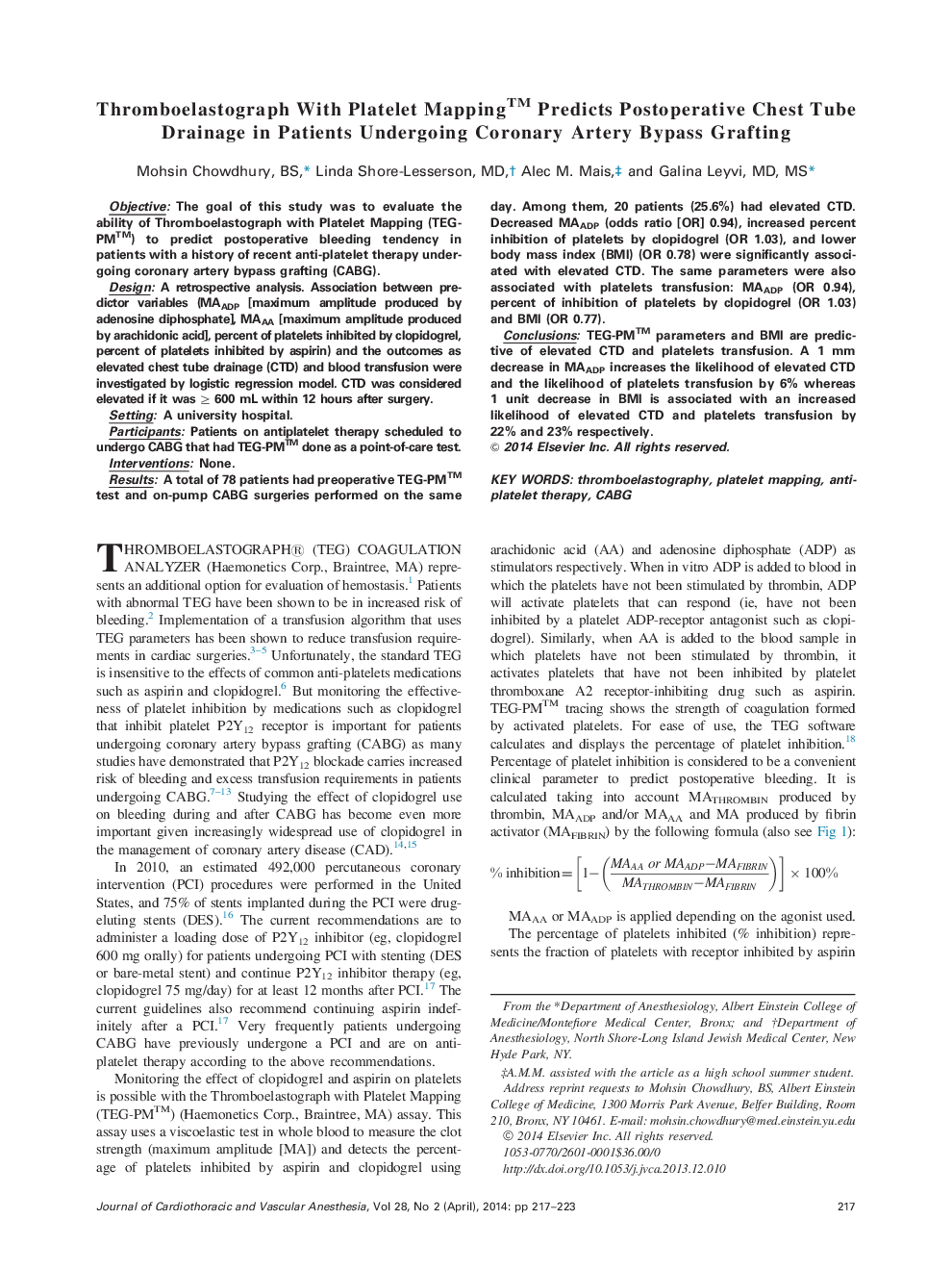| Article ID | Journal | Published Year | Pages | File Type |
|---|---|---|---|---|
| 5883972 | Journal of Cardiothoracic and Vascular Anesthesia | 2014 | 7 Pages |
ObjectiveThe goal of this study was to evaluate the ability of Thromboelastograph with Platelet Mapping (TEG-PMTM) to predict postoperative bleeding tendency in patients with a history of recent anti-platelet therapy undergoing coronary artery bypass grafting (CABG).DesignA retrospective analysis. Association between predictor variables (MAADP [maximum amplitude produced by adenosine diphosphate], MAAA [maximum amplitude produced by arachidonic acid], percent of platelets inhibited by clopidogrel, percent of platelets inhibited by aspirin) and the outcomes as elevated chest tube drainage (CTD) and blood transfusion were investigated by logistic regression model. CTD was considered elevated if it wasâ¥600 mL within 12 hours after surgery.SettingA university hospital.ParticipantsPatients on antiplatelet therapy scheduled to undergo CABG that had TEG-PMTM done as a point-of-care test.InterventionsNone.ResultsA total of 78 patients had preoperative TEG-PMTM test and on-pump CABG surgeries performed on the same day. Among them, 20 patients (25.6%) had elevated CTD. Decreased MAADP (odds ratio [OR] 0.94), increased percent inhibition of platelets by clopidogrel (OR 1.03), and lower body mass index (BMI) (OR 0.78) were significantly associated with elevated CTD. The same parameters were also associated with platelets transfusion: MAADP (OR 0.94), percent of inhibition of platelets by clopidogrel (OR 1.03) and BMI (OR 0.77).ConclusionsTEG-PMTM parameters and BMI are predictive of elevated CTD and platelets transfusion. A 1 mm decrease in MAADP increases the likelihood of elevated CTD and the likelihood of platelets transfusion by 6% whereas 1 unit decrease in BMI is associated with an increased likelihood of elevated CTD and platelets transfusion by 22% and 23% respectively.
